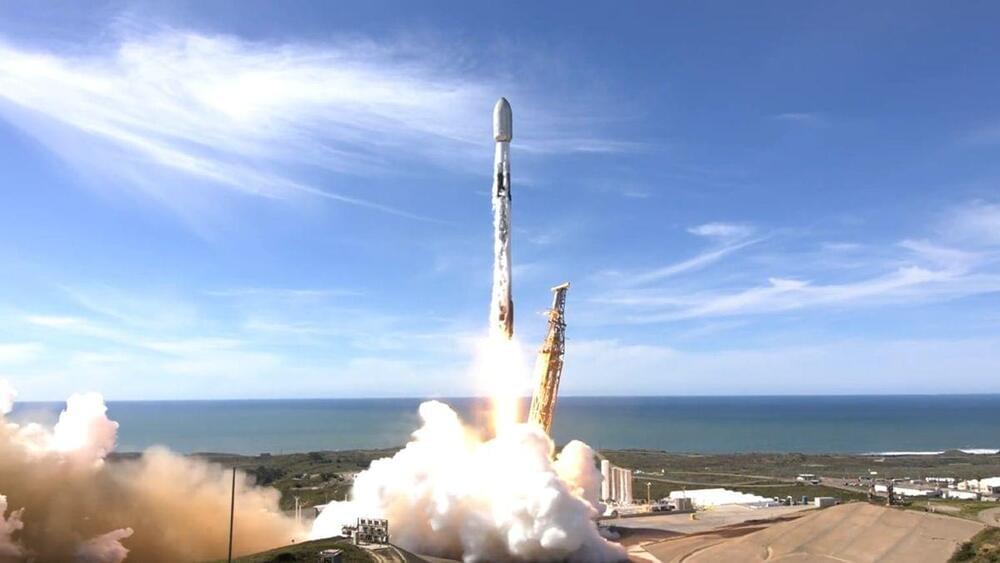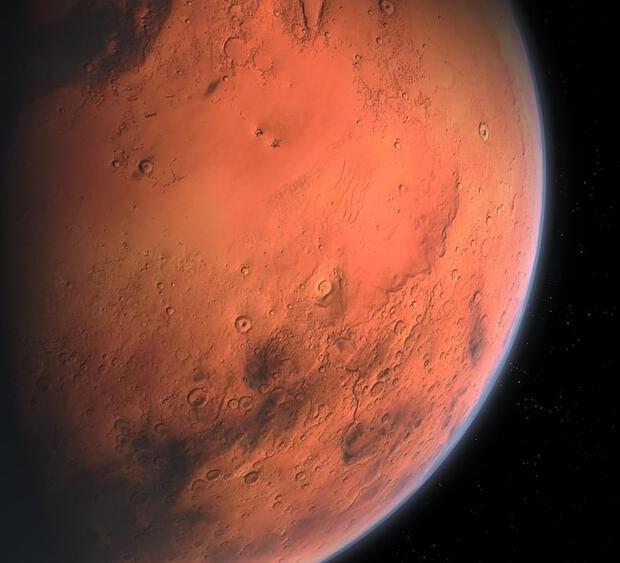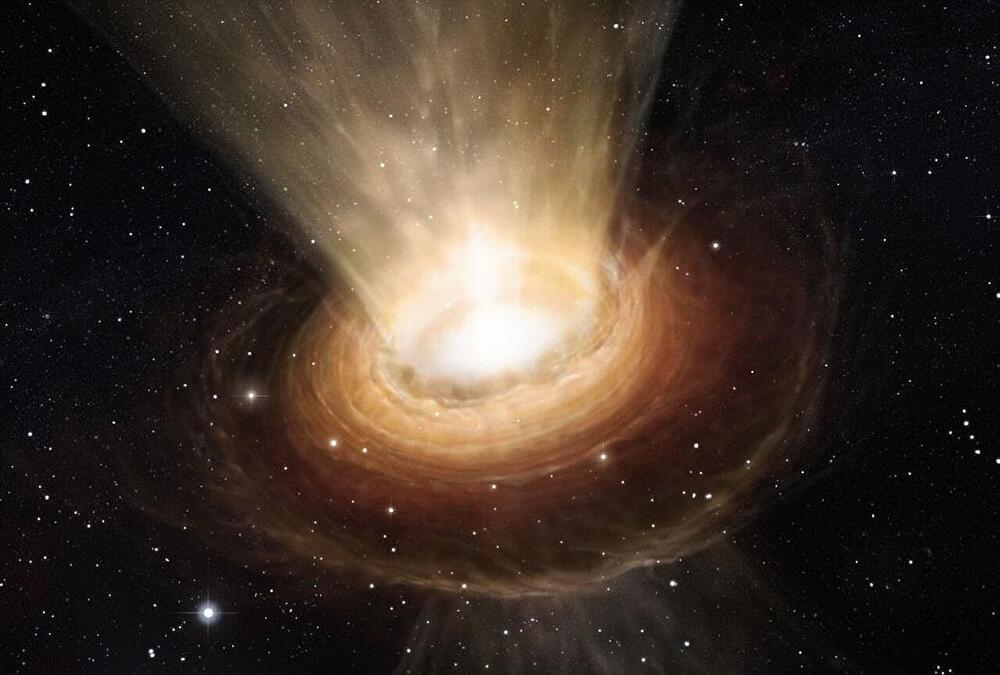Step into the enigmatic realm of neutron stars, where the universe showcases its extremes. This documentary-style video guides you through the life and legacy of neutron stars, the dense remnants left by supernovae, the explosive deaths of massive stars. We delve into the heart of these cosmic enigmas, exploring how they compress more mass than the sun into a sphere just kilometers across, resulting in densities and gravitational fields almost beyond comprehension. Discover the peculiarities of neutron star phenomena, such as pulsars that beam radio waves across the cosmos and magnetars with magnetic fields trillion times stronger than Earth’s.
Category: alien life – Page 37
Unlocking the Cosmic Recipe for Planet Formation
Researchers have discovered significant amounts of water vapor in the disc around the young star HL Tauri, suggesting the presence of water where planets are forming. This breakthrough, enabled by the ALMA telescope in Chile, marks the first time astronomers have been able to quantify water vapor in a cool, stable disc conducive to planet formation. The findings could have profound implications for our understanding of how planets, particularly those capable of hosting life, are formed. (Artist’s concept.) Credit: SciTechDaily.com.
Researchers have found water vapor in the disc around a young star exactly where planets may be forming.
Water is a key ingredient for life on Earth and is also thought to play a significant role in planet formation, yet, until now, astronomers have never been able to map how water is distributed in a stable, cool disc — the type of disc that offers the most favorable conditions for planets to form around stars.

Is Dune-Style Genetic Memory Possible?
Inherited memory was a popular theory in the past, inspiring stories like Frank Herbert’s Dune, but could it be possible with alien biologies or cybernetic civilizations, and what is it? Music Courtesy of: Epidemic Sound http://epidemicsound.com/creator


James Webb Space Telescope captures the end of planet formation
The James Webb Space Telescope (JWST) is helping scientists uncover how planets form by advancing understanding of their birthplaces and the circumstellar disks surrounding young stars.
In a paper published in The Astronomical Journal, a team of scientists, led by Naman Bajaj of the University of Arizona and including Dr. Uma Gorti at the SETI Institute, images for the first time winds from an old planet-forming disk (still very young relative to the sun) which is actively dispersing its gas content. The disk has been imaged before, but winds from old disks haven’t. Our knowing when the gas disperses is important, as it constrains the time left for nascent planets to consume the gas from their surroundings.
At the heart of this discovery is the observation of TCha, a young star (relative to the sun) enveloped by an eroding disk notable for its vast dust gap, approximately 30 astronomical units in radius. For the first time, astronomers have imaged the dispersing gas (aka winds) using the four lines of the noble gases neon (Ne) and argon (Ar), one of which is the first detection in a planet-forming disk. The images of [Ne II] show that the wind is coming from an extended region of the disk.
The Fermi Paradox: Imprisoned Planets
Getting into space is difficult, but it may be that other worlds have even harder times at it than we do, imprisoned by orbital debris, high gravity, or even being quarantined by alien civilizations.
Start building your ideal daily routine! The first 100 people who click on the link will get 25% OFF Fabulous Premium: http://thefab.co/isaac.
Visit our Website: http://www.isaacarthur.net.
Join Nebula: https://go.nebula.tv/isaacarthur.
Support us on Patreon: / isaacarthur.
Support us on Subscribestar: https://www.subscribestar.com/isaac-a…
Facebook Group: / 1583992725237264
Reddit: / isaacarthur.
Twitter: / isaac_a_arthur on Twitter and RT our future content.
SFIA Discord Server: / discord.
Listen or Download the audio of this episode from Soundcloud: Episode’s Audio-only version: / the-fermi-paradox-imprisoned-planets.
Episode’s Narration-only version: / the-fermi-paradox-imprisoned-planets-narra…
Credits:
The Fermi Paradox: Imprisoned Planets.
Science \& Futurism with Isaac Arthur.
Episode 329a, February 13, 2022
Written, Produced \& Narrated by Isaac Arthur.
Cover Art:
Jakub Grygier https://www.artstation.com/jakub_grygier.
Graphics:
The Fermi Paradox: Absent Megastructures
The great mystery of where all the aliens are in our vast Universe contemplates ancient interstellar civilizations building enormous megastructures that rival worlds or even stars in the immensity… and asks why we can’t see these giant alien artifacts.
David Brin on Event Horizon with John Michael Godier: • A.I. Wars, The Fermi Paradox and Grea…
This Week in Space with Rod Pyle: • Alien Megastructures — Isaac Arthur a…
Sign up for a Curiosity Stream subscription and also get a free Nebula subscription (the streaming platform built by creators) here: https://curiositystream.com/isaacarthur.
Visit our Website: http://www.isaacarthur.net.
Join Nebula: https://go.nebula.tv/isaacarthur.
Support us on Patreon: / isaacarthur.
Support us on Subscribestar: https://www.subscribestar.com/isaac-a…
Facebook Group: / 1583992725237264
Reddit: / isaacarthur.
Twitter: / isaac_a_arthur on Twitter and RT our future content.
SFIA Discord Server: / discord.
Listen or Download the audio of this episode from Soundcloud: Episode’s Audio-only version: / the-fermi-paradox-absent-megastructures.
Episode’s Narration-only version: / the-fermi-paradox-absent-megastructures-na…
Credits:
The Fermi Paradox: Absent Megastructures.
Science \& Futurism with Isaac Arthur.
Episode 352, July 21, 2022
Written, Produced \& Narrated by Isaac Arthur.
Editors:
Nihilistic Aliens
Many doubt whether existence has any purpose or meaning, but could entirely civilizations become nihilistic. Would this spell their doom? And if not, what would they be like?
Use code isaacarthur at the link below to get an exclusive 60% off an annual Incogni plan: https://incogni.com/isaacarthur.
Visit our Website: http://www.isaacarthur.net.
Join Nebula: https://go.nebula.tv/isaacarthur.
Support us on Patreon: / isaacarthur.
Support us on Subscribestar: https://www.subscribestar.com/isaac-a…
Facebook Group: / 1583992725237264
Reddit: / isaacarthur.
Twitter: / isaac_a_arthur on Twitter and RT our future content.
SFIA Discord Server: / discord.
Credits:
Nihilistic Aliens.
Episode 423b; December 3, 2023
Produced, Written \& Narrated by: Isaac Arthur.
Editor: Donagh Broderick.
Music Courtesy of: Steve Cardon.
The Philosophy of Star Trek [Federation, Post Scarcity Economy, Alien Cultures]
Star Trek is the most popular and longest running Sci-Fi franchise in American history. Created by Gene Roddenberry, Star Trek follows the various crew of Starfleet in their missions across the galaxy.
This presentation showcases the inspiration behind Star Trek, how the Federation came to be, examines the post-scarcity economy featured in their future Earth society, and explores the philosophies of all of the major alien cultures shown throughout the Star Trek series.
00:00 — Intro.
09:38 — The Augments.
14:06 — World War 3
15:13 — Post Atomic Horror.
15:45 — First Contact.
17:47 — The Vulcans.
23:30 — Post-Scarcity Economy.
33:24 — The Federation.
45:22 — The Maquis.
48:26 — The Romulans | The Cardassians | The Klingons.
52:00 — The Ferengi.
1:00:00 — The Dominion.
1:06:08 — The Borg.
1:13:34 — Conclusion.
1:16:01 — Outro